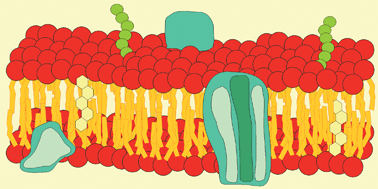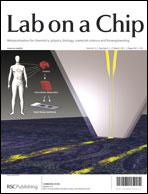Miniaturised technologies for the development of artificial lipid bilayer systems
Abstract
Artificially reproducing cellular environments is a key aim of synthetic biology, which has the potential to greatly enhance our understanding of cellular mechanisms. Microfluidic and lab-on-a-chip (LOC) techniques, which enable the controlled handling of sub-microlitre volumes of fluids in an automated and high-throughput manner, can play a major role in achieving this by offering alternative and powerful methodologies in an on-chip format. Such techniques have been successfully employed over the last twenty years to provide innovative solutions for chemical analysis and cell-, molecular- and synthetic- biology. In the context of the latter, the formation of artificial cell membranes (or artificial


 Please wait while we load your content...
Please wait while we load your content...